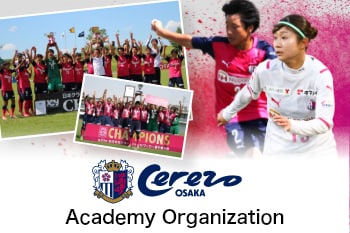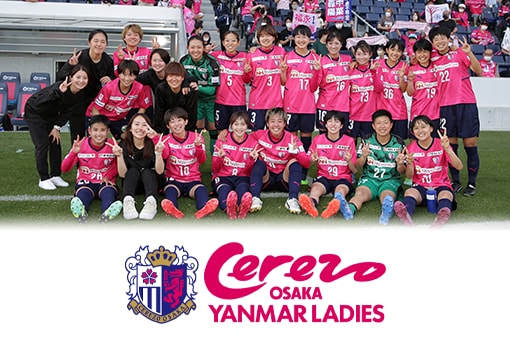Established in December 1993, Cerezo Osaka is celebrating its 30th anniversary of joining the J.League this season.
To date, they have shared countless experiences of joy, excitement, frustration, and despair with the entire “Cerezo family,” carving each moment of cherry blossom history.
On this page, we look back at each season of the club’s unforgettable history.
Working together as a team to stand at the top of the JFL and move up to the long-cherished J.League
Cerezo Osaka was inaugurated in December 1993 with its predecessor, Yanmar Diesel Soccer Club, as its parent organization. In the club’s first year, 1994, it took on the JFL under the guidance of its first manager, Paulo Emilio. Steadily accumulating victories from the first match with the goal of finishing in first or second place, the requirement for promotion to the J.League, Cerezo Osaka continued its rapid advancement lead by players such as Hiroaki Morishima and Katsuo Kanda, who held key offensive and defensive positions. They successfully won the JFL in the league’s final round. Cerezo Osaka was promoted to the J.League in its first year after inauguration. Furthermore, Cerezo Osaka was a semifinalist in the Emperor’s Cup, making steady advances and successively defeating Tokyo Verdy, Urawa Reds, and Yokohama Marinos, all top J.League teams. They had stirred up a “cherry blossom whirlwind.”
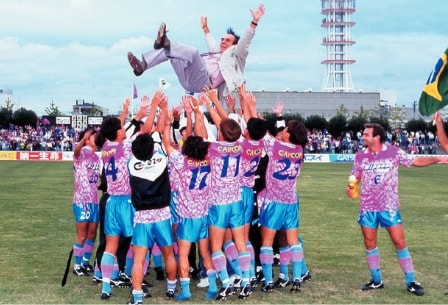
- Season Data (JFL)
-
[Manager] Paulo Emilio
[Results]- JFL: Champions (26 wins, 4 losses)
- Yamazaki Nabisco Cup: Defeated in first match
- Emperor’s Cup: Semifinalist
TOPICS
- The birth of Cerezo Osaka
- On December 9, 1993, OSAKA FOOTBALL CLUB CO., LTD. was established and a launch party was held. The team name, which had been selected through a public naming contest, was announced. It was Cerezo Osaka.

- Clinched promotion to the J.League and won the JFL
- On October 20, in the Fujieda Brooks match, which had been delayed due to a typhoon, Cerezo Osaka won at the end of overtime to secure a position in the top two positions. After clinching a promotion to the J.League in its first year after inauguration, Cerezo Osaka continued to win an easy 3-1 victory in the final round. Cerezo Osaka also successfully won the JFL.

- Strong performance in the Emperor’s Cup
- Having gained confidence with repeated victories in the JFL, the cherry blossom warriors also made a strong showing in the Emperor’s Cup. Cerezo Osaka defeated the J.League teams one after another to become a semifinalist.
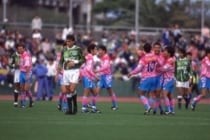
- In December 1993, Kenji Onitake, who had been working as the head of the Professionalization Promotion Office assumed office as the first president of OSAKA FOOTBALL CLUB CO., LTD.
On March 8, the team played against Uruguay’s Peñarol as an inaugural match. The game ended as a 0-0 tie. - Six players were selected for the JFL Best XI: Takeda, Toninho, Kanda, Kudaka, Morishima, and Marquinhos. Takeda also won the Best GK Award.
- After the end of the season, Cerezo Osaka participated in the “’94 Midosuji Parade.” They announced to the local residents that they had been promoted to the J.League
First attempt at their dream stage
A year that will live on in both memory and records
The object of their ambition: the J.League. Cerezo acquired goalkeeper Gilmar Rinaldi, a former member of the Brazilian World Cup team, and went on to take on the top league for the first time with a focus on counterattacks. The opening match was an away match against Sanfrecce Hiroshima. Amid a fierce battle that went into overtime, Takashi Yamahashi, who took the field part way through the game, scored the winning point that was the club’s first J.League goal, winning its first J.League victory in its first match. The team subsequently went through many victories and losses faced with the high hurdle of the J.League, but it continued fighting tenaciously and ended with the result of 8th place for the year in the first year after its promotion. Morishima, who made strenuous efforts as the main attacker, achieved 11 goals for the year. He was selected to the Best XI for the first time.

- Season Data (JFL)
-
[Manager] Paulo Emilio
[Results]- J.League: 8th place
Suntory Series: 9th place (13 wins, 13 losses)
NICOS Series: 10th place (12 wins, 14 losses) - Yamazaki Nabisco Cup: –
- Emperor’s Cup: Defeated in second match
- J.League: 8th place
TOPICS
- Former Brazil national team GK joins
- Gilmar Rinaldi, who experienced winning the 1994 FIFA World Cup USA as member of the Brazil national team, joins. In addition to his exceptional skill at saves, his high level of professionalism was also a positive influence on the team.
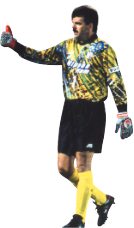
- First game, first J.League win
- The team battled Hiroshima in its opening game. The intense match, which extended into overtime, was clinched by Yamahashi, who was subbed in. He pulled off a dramatic golden goal 113 minutes into the game and led the team to its first victory.

- Mister Cerezo, first-time Best XI
- Having gained confidence with repeated wins in the JFL, the cherry blossom warriors also made a strong showing in the Emperor’s Cup. Cerezo Osaka defeated one J.League team after another to become a semifinalist.
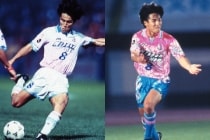
- The team leaves Amagasaki Ground that it had used since the Yanmar era and relocated is practice location to Maishima.
- Morishima makes his debut as a member of the Japan national team against Scotland on May 21.
- In late April, the team faces an unexpected situation when manager Paulo Emilio is hospitalized for heart failure. The situation was fortunately not serious and Emilio returns to the bench in mid-June.
- Kudaka and Sasaki retire. They were outstanding players who contributed greatly to the promotion to the J.League.
Though a new stadium was completed,
the season was filled with tough matches
In 1996, when the league switched from a split-season format to a single-season format, the team faced a difficult start where there were far more losses, with 3 wins and 7 losses in the first 10 games. Manager Paulo Emilio resigned in May. Coach Hiroshi Sowa was promoted to manager. While the team was struggling win matches, renovation work for Nagai Stadium that had started in 1992 was completed. Though team tried to take the completion of its new home ground as an opportunity to stage a comeback, they were unable to clinch close games throughout the season and finished in 13th place. Additionally, Marquinhos, who had greatly contributed to the team’s J.League promotion left the team at the end of the year. Cerezo’s first playmaker, who had enthralled spectators with his dazzling passes, regrettably returned to Brazil.

- Season Data (JFL)
-
[Manager] Paulo Emilio → Hiroshi Sowa (May onward)
[Results]- League: 13th place (10 wins, 20 losses)
- Yamazaki Nabisco Cup: Defeated in group stage
- Emperor’s Cup: Defeated in fourth match
TOPICS
- Nishizawa returns from training abroad and makes his J.League debut
- Nishizawa, who had been training abroad in the Netherlands since joining the team in 1995, returned after around 11 months and made his J.League debut. He marked his return with 3 goals in 14 league matches.
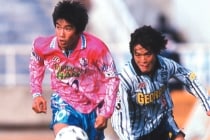
- First change of manager
- The team fell into an unexpected slump with 1 win and 7 losses in its first 8 games since the season started, and a decision was made in May to replace the manager. Hiroshi Sowa (right) took over as manager from Emilio (left), who had served as the team’s first manager.
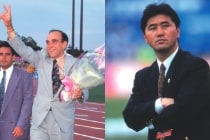
- Renovation of Nagai Stadium completed
- Renovation work on Nagai Stadium, their “new home,” was finally completed. On July 27, the team invited Brazil’s Botafogo and held a match to celebrate the opening of the stadium.

- Marquinhos, the cherry blossoms’ first playmaker left the team at the end of 1996. His exceptional technique had enthralled many of the team’s supporters.
- The team scored a phenomenal 8 goals in its match against Fukuoka in the Yamazaki Nabisco Cup on July 3. It was the greatest number of goals in team history.
- From the match against Ishihara in the 13th round of the J.League to the match against Hiroshima in the 22nd round, the team was mired in a record 10 consecutive losses. In its match against Kyoto in the 23rd round, while their opponents scored first, the team managed to stop its losing streak thanks to goals by Manoel and Nishizawa.
Levir Culpi’s first stint at the helm begins
A year that built a “foundation”
In order to crawl back from the previous year’s slump, the team called in Levir Culpi as their new manager. He was thorough in managing the players’ condition and set to work building a foundation of being able to run continuously for 90 minutes. Cerezo sought to make inroads into the upper ranks in league matches, which had returned with the return of the split-season format. However, matches continued without Morishima and Nishizawa, who had been called up for the Japan national team. Amidst this, Takayuki Yokoyama and Claudinho, who had joined the team in July, led the offense with 11 and 8 points, respectively. However, the team was unable to squeeze into the upper ranks. As the team continued to make reforms, its guardian angel, Gilmar Rinaldi, retired after the 1st stage. With this, a great player beloved by players and supporters left the football pitch.

- Season Data (JFL)
-
[Manager] Levir Culpi
[Results]- J.League: 11th place for year
1st stage: 11th place (7 wins, 9 losses)
2nd stage: 8th place (9 wins, 7 losses) - Yamazaki Nabisco Cup: Defeated in group stage
- Emperor’s Cup: Defeated in fourth match
- J.League: 11th place for year
TOPICS
- Birth of the league’s first player from the K League
- Ko Jeong-woon, who wore number 10 as a member of the South Korea national team in the 1994 FIFA World Cup USA, joined the team. He was the first player to join the J.League from the K League.

- The team’s guardian angel retires
- Gilmar Rinaldi, who had defended the goalmouth since 1995, retired at the end of the 1st stage. In the last match, he ended his career after being tossed into the air in celebration by both teams.

- Yokoyama and Claudinho score numerous goals
- As the number of matches without Morishima and Nishizawa due to their being summoned called up for the Japan national team increased, Yokoyama (left) scored a team-record 11 points. Furthermore, Claudinho (right), who joined from the 2nd stage scored 8 points, making up for the absence of key players.
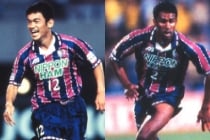
- Nishizawa made his debut as a member of the Japan national team in the May 21 match against South Korea. Nishizawa, along with Morishima, were constantly called up since then.
- In the Osaka Derby on August 23, the goal scored by Yokoyama was the 4000th point in the J.League’s history.
Morishima with a breakthrough season as new captain,
18 goals, and World Cup appearance
Yasutaro Matsuki, who lead V Kawasaki to two consecutive J.League championships was appointed as the new manager, with the Osaka derby being the opening match. Although the team had been winless in away games at the derby, it recorded a 2-1 win with the points scored by Morishima and Yokoyama, achieving its first win. Despite keeping the momentum and winning 4 consecutive games since the opening, the team subsequently had a year where the instability of the defense stood out, with 12 games where it allowed 3 or more points. Despite this, it tenaciously accumulated wins, including two against Gamba Osaka, finishing in 9th place for the year. Morishima, who was named captain that year, scored 18 points, including scoring goals in 7 consecutive games. Furthermore, he accomplished great feats such as playing in the World Cup in France and became the face of the team in both name and substance.
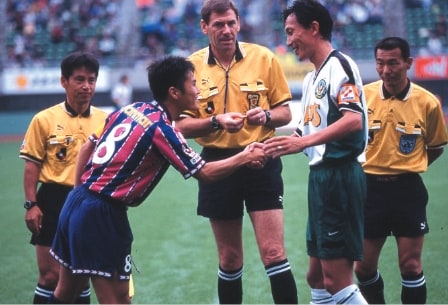
- Season Data (JFL)
-
[Manager] Yasutaro Matsuki
[Results]- J.League: 9th place
1st stage: 9th place (8 win, 9 losses)
2nd stage: 13th place (7 win, 10 losses) - Yamazaki Nabisco Cup: Defeated in group stage
- Emperor’s Cup: Defeated in third match
- J.League: 9th place
TOPICS
- Despite recruiting the J.League’s first champion manager...
- Yasutaro Matsuki took the reins as the new manager, but with continuing erratic matches, the team suffered more losses than victories in league and cup games. He left Cerezo after only one year.
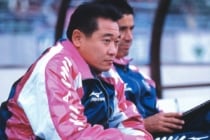
- First away game win in the Osaka Derby
- In the Osaka Derby, which took place in the league’s opening, the team allowed its opponent to score first early in the game, but Morishima and Yokoyama scored goals at 41 minutes and 87 minutes, respectively. The team achieved its first win on enemy ground.

- A new captain awakens
- Morishima, who had taken position as captain starting that year, made a vigorous effort, including scoring 18 points, his career record. He became a regular as a member of the Japan national team and also played in the World Cup in France. A World Cup warrior was born at Cerezo.
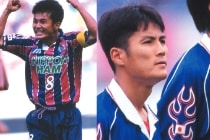
- Cerezo Osaka Football School opens. The school began making the rounds to provide guidance to kindergartens and junior high schools.
- In the 6th round of the 1st stage, in a game against Iwata, the team suffered a major defeat, allowing 9 points. This became the worst record in the J.League for points allowed.
- Morishima scored goals in seven consecutive games from the opening, setting a J.League record.
- In the game against Kashiwa in the last round of the 1st stage, the team lost 5-7 at the end of a fierce back and forth. The total of 12 combined points scored by both teams set a record for the maximum number of points scored in a single game in the J.League.
- Katsuya, who led the team as the core of its defense and was a former member of the Japan national team, retired.
The vaunted offense shows off its strength
The team finished in 6th place, the highest yet
In 1999, when Belgian René Desaeyere, Cerezo’s first manager hailing from Europe took the reins, the systematic style of football he had learned in Europe permeated the team, and it was able to steadily produce wins in quantity starting from the opening. Even amidst this, the performance of the offense was dazzling, and the team scored a league-leading 64 goals, with forward Hwang Sun-hong, a former member of the South Korea national team, scoring 24 points in league games, shining as the team’s first top scorer, and Nishizawa pulled of a hat trick in only 7 minutes in the match against Kashiwa Reysol in the 5th round of the 1st stage. The vaunted offense was dynamic throughout the season, with 10 matches with 3 or more points scored, and the club finished in 6th place, the highest in its history.
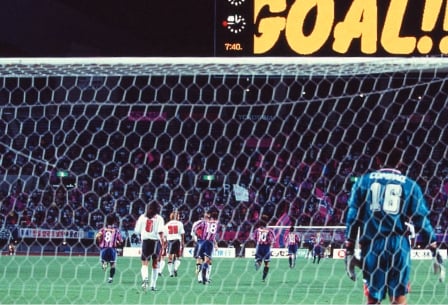
- Season Data (J1 League)
-
[Manager] René Desaeyere → Hiroshi Soejima (December onward)
[Results]- J1 League: 6th place
1st stage: 5th place (10 wins, 5 losses)
2nd stage: 5th place (9 wins, 6 losses) - Yamazaki Nabisco Cup: Defeated in the second match
- Emperor’s Cup: Defeated in fourth match
- J1 League: 6th place
TOPICS
- Offensive ability explodes under manager René
- Led by René (left), the first manager hailing from Europe to take the reins, the team’s ability to score points improved greatly. The team scored a league-leading 64 points and was in 6th place for the year.

- The club’s first-ever top scorer is born
- In his second season since joining, Hwang Sun-hong was a good match with the team, scoring 24 goals. Shining as Cerezo’s first top scorer, he was also selected for the Best XI.

- All-star Morishima chosen as MVP
- In the J.League All-Star Soccer match held at the team’s home stadium in Nagai, Morishima scored a goal that led J-WEST to victory and was chosen as the MVP. Incidentally, his cumulative total of 6 points scored in the All-Star Soccer match is the most in the competition’s history. He is truly an all-star.
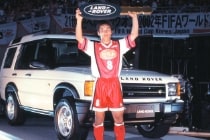
- Noh Jung-yoon, a midfielder on the South Korea national team who played in the 1998 French World Cup, joins the team. Wearing number 10, he pulled the team forward together with Hwang Sun-hong as the Korean duo.
- On June 8, a friendly match was held against Italy’s Perugia. The result was a 0-2 loss for the team.
- On September 22, Kudaka, a legendary player who contributed greatly to the promotion to the J.League, passed away at the age of 36. Everyone was engulfed in grief.
Home stadium enveloped in silence
The “tragedy” that left 40,000 people at a loss for words
The team acquired midfielder Kazuaki Tasaka, a former member of the Japan national team, and midfielder Yoon Jong-hwan, a member of the South Korea national team, as key players in the midfield. Having created a solid foundation with its lineup, the team made a major a breakthrough in the 1st stage. While the team lost its opening game, after that, players exemplifying the offense, including Morishima, Nishizawa, and Noh Jung-yoon, showed a high ability to score points as in the year before, and added winning points. In the final round, the team faced a home game against Kawasaki Frontale, winning the first stage if they won the match. However, the team suffered a surprising defeat in overtime to an opponent that had been wandering the lower ranks. The team lost its chance at a first victory by a hair’s breadth, and the sight at the hushed home stadium was worthy of the name the “Tragedy of Nagai.” While the team finished in 9th place in the following 2nd stage, it surpassed its rank in the previous year, coming in at 5th for the year.
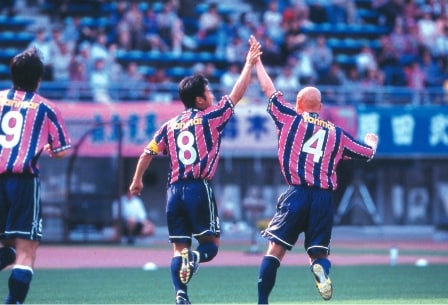
- Season Data (J1 League)
-
[Manager] Hiroshi Soejima
[Results]- J1 League: 5th place
1st stage: 2nd place (10 wins, 5 losses)
2nd stage: 9th place (7 wins, 8 losses) - Yamazaki Nabisco Cup: Defeated in the second match
- Emperor’s Cup: Best 8
- J1 League: 5th place
TOPICS
- A capable player joins as midfielder
- Tasaka (left), a former member of the Japan national team who made his presence known on both offense and defense, and Yoon Jong-hwan (right), a member of the South Korea national team, joined the team and improved the sense of stability and structure in the midfield. The groundwork for making inroads into the championship competition had been laid.

- Ultimate duo produces scores goals
- Morishima (left) and Nishizawa (center) together scored 15 points in league games and were selected for the Best XI. Praised as the strongest duo in the league, their superb team play proved to be a threat to their opponents.
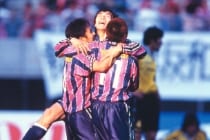
- “Tragedy of Nagai” that ended in tears
- The team went into the Kawasaki F match in the final round of the 1st stage needing only one more victory to be champions. Winning this one match would have sealed their victory, but it suffered an unexpected golden goal loss to an opponent floundering in 15th place. The stadium went silent from the shock.

- The team relocated its practice ground from the old Maishima Ground to Minamitsumori Sakura Park Sports Square. A clubhouse was also built on the premises.
- Soejima, who had been serving as acting manager since the Emperor’s Cup the previous year, was appointed the new manager. He led the team to major advances in the 1st stage.
- After the season ended, Nishizawa announced his plan to challenge himself overseas. He was temporarily transferred to Espanyol in Spain.
Gears not meshing the entire match,
leading to the team’s first emotion to J2
The 2001 year was a year in which match-ready players such as recent high school graduate rookie Yoshito Okubo, who was acquired after fierce competition, Kazunari Okayama, and Kenji Oshiba. However, it floundered from the start, with no wins in the first five games after the opening. On August 20, the team dismissed its manager, Hiroshi Soejima, and recruited João Carlos, who had guided the Kashima Antlers to numerous titles. However, the team was unable to fill the hole left by Nishizawa, who had transferred overseas before he season. The team’s demotion to J2 was determined with 3 games remaining with its loss to FC Tokyo in the 12th round of the 2nd stage. Despite this, the team defeated formidable opponents such as Kagoshima and Urawa to advance to the finals in the Emperor’s Cup. Although the team lost its match with Shimizu S-Pulse on New Year’s Day in overtime, it played a great game.

- Season Data (J1 League)
-
[Manager] Hiroshi Soejima → João Carlos (August onward)
→ Akihiro Nishimura (November onward)
[Results]- J1 League: 16th place
1st stage: 14th place (3 wins, 2 draws, 10 losses)
2nd stage: 16th place (5 wins, 10 losses) - Yamazaki Nabisco Cup: Defeated in first match
- Emperor’s Cup: Semifinalist
- J1 League: 16th place
TOPICS
- Joining of a three-title rookie and fastest-ever hat trick
- Okubo (left), who achieved titles in all 3 major high school tournaments while at Kunimi High School, joined the team, and played in 20 games and scored 2 points. Manaka, who was subbed in in the match against Kashiwa in the 14th round of the 1st stage (right side, photo on right) pulled off a hat trick in only 3 minutes. This set a new record for the fastest hat trick in the J League.

- Falling into a slump and the team’s first demotion
- The team started very slow with 3 wins, 2 draws, and 10 losses in the 1st stage. In the 2nd stage, it suffered 7 consecutive losses from the opening. They were unable to escape from the rut, with the team’s demotion to J2 becoming a certainty with three games remaining.
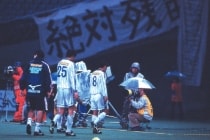
- Falling just short of advancing to the finals
- After the team’s demotion was decided, the team’s mood changed, winning seven consecutive official matches. In the Emperor’s Cup, the team advanced to the finals on New Year’s Day, but was unable to win its first title, losing 2-3 to Shimizu.

- Vice President Onishi, who was in charge of strengthening the team, resigned in July citing the team’s poor performance.
- Floundering, the club made decisions to replace its manager twice, in August and November. While the team’s demotion to J2 was definite, it finished with 7 wins and 1 loss under the management of Nishimura, who had taken over after the demotion.
- Despite being relegated to J2, many key players such as Morishima and Yoon remained with the team.
The dynamic “two-digit quartet”
Scored the most points ever and returned to J1 in one year
Under manager Akihiro Nishimura, who had taken over from João Carlos midway through the previous year, the club competed in J2 for the first time. Nishizawa, who had been playing in Europe, returned after two years, and pledged that the team would return to J1 in one year. While many opponents resisted the powerful Cerezo offense by emphasizing defense, the quartet of Morishima, Turković, Okubo, and Yasuo Manaka scored double digit goals. When it was all said and done, the team had swept the league with overwhelming offense, scoring 93 points, the most in the league, and in the match against Albirex in the 43rd round, the team scored an easy 3-0 victory against its rival for promotion, ensuring its place in the top two, within the cut-off for promotion. The team had returned to J1 in one year.

- Season Data (J2 League)
-
[Manager] Akihiro Nishimura
[Results]- J2 League: 2nd place (25 wins, 12 draws, 7 losses)
- Yamazaki Nabisco Cup: –
- Emperor’s Cup: Defeated in fourth match
TOPICS
- Three cherry blossom warriors selected as World Cup members
- Morishima (center) and Nishizawa were selected for the Japan national team, and Yoon Jong-hwan was selected for the South Korea national team in the Japan/Korea World Cup. Among them, Morishima scored a priceless winning point in a match against Tunisia held in Nagai and became a key figure in helping Japan advance to the round of 16 for the first time ever.

- A display of overwhelming offensive ability
- The quartet of Morishima (right side, photo on left), Turković (center, photo on left), Okubo (photo on right), and Manaka scored double digit goals. There was a display of overwhelming offensive ability with 93 points scored for the year.
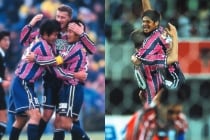
- The team had returned to J1 in one year.
- The team scored an easy 3-0 victory in a match against Niigata in the 43rd round with promotion to J1 at stake. The team ensured a position in the top two, within the cut-off for promotion, clinching its return to J1. The team formed a circle and tossed manager Nishimura into the air in celebration.

- Manaka, who had suffered a major injury with a fractured skull in February, returned mid-season. He scored 13 points with plays that made you forget that he was injured.
- The team was undefeated in the 14 games from the match against Yamagata in the 19th round to the match against Kofu in the 32nd round. The team accumulated wins with consistent strength.
Slowing down in the second half, middle rank in league matches
“Tears for the third time” in the Emperor’s Cup
Back on the J1 League stage in one year. The team won a slugfest against Shimizu 5-4 in the second round of the 1st stage, achieving its first victory after returning to the J1 League. It continued to tenaciously accumulate victories and made it to the season’s halfway point in 5th place. However, the team was unable to maintain its strong form from the first half in the 2nd stage, experiencing a major slump with only 1 win in 10 game from the opening. In October, head coach Yuji Tsukada took over from Nishimura as manager, but the momentum didn’t shift, with the team ending up in 9th place for its first year back in J1. Despite this, the team won close matches in the Emperor’s Cup and advanced to the finals for the third time. The team went against Júbilo Iwata in the finals, but the opponent maintained its strong defense until the end and Cerezo lost without scoring any goals. They were unable to win their first title, shedding tears once again.

- Season Data (J1 League)
-
[Manager] Akihiro Nishimura → Yuji Tsukada (October onward)
[Results]- J1 League: 9th place
1st stage: 5th place (8 wins, 1 draw, 6 losses)
2nd stage: 12th place (4 wins, 3 draws, 8 losses) - Yamazaki Nabisco Cup: Defeated in group stage
- Emperor’s Cup: Semifinalist
- J1 League: 9th place
TOPICS
- The dynamic new ace wearing number 10
- Okubo (center), who had been entrusted with the number 10 from that year, scored 16 goals, the most points scored for a Japanese player. Together with Baron (front), who scored 9 points, he made his tremendous presence known.
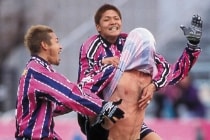
- Friendly match against Serie A powerhouse
- On June 4, the team held a friendly match against Parma. The team held on for a 2-2 draw against the Italian powerhouse.
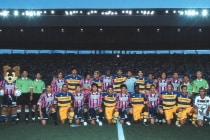
- Third time was not the charm
- The team advanced to the finals in the Emperor’s Cup by defeating G Osaka, Kobe, and Kashima. Cerezo had stepped into the limelight for the third time, continuing from 1994 and 2001, but Iwata maintained a strong defense until the end, and the team suffered a regrettable 0-1 loss. Once again, it fell short of becoming number one in Japan.
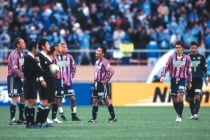
- Nelson Yoshimura, who had contributed to the club as a player, manager, and staff member from the Yanmar era, passed away on November 1. All those who loved the cherry blossoms felt sorrow.
- The club celebrated the 10th anniversary of its founding in December.
Despite an unexpected event before the opening
The team managed to stay in J1 at the last moment
Petar Nadoveza, who was supposed to become manager, was unable to come to Japan due to a chronic illness, and Fuad Muzurović hastily took the role. However, his lack of preparation was undeniable, and the club immediately decided to dismiss him after the team ended its third official match from opening with no wins. However, Albert Pobor, who was promoted from head coach, was also unable to win matches, and the team unexpectedly ended the 1st stage in last place. In July, the team recruited Shinji Kobayashi as the new manager and entrusted him with rebuilding the team. Momentum failed to shift and the team continued to struggle in the 2nd stage. Despite this, although the team began to see the possibility of demotion to J2, it roused itself to action in the final games. Making it through the last 4 matches undefeated, the team managed to remain in J1 at the last minute.

- Season Data (J1 League)
-
[Manager] Fuad Muzurović → Albert Pobor (April onward)
→ Shinji Kobayashi (July onward)
[Results]- J1 League: 15th place
1st stage: 16th place (2 wins, 4 draws, 9 losses)
2nd stage: 12th place (4 wins, 4 draws, 7 losses) - Yamazaki Nabisco Cup: Defeated in group stage
- Emperor’s Cup: Defeated in fourth match
- J1 League: 15th place
TOPICS
- Manager dismissed after three official matches. Stuck in a quagmire.
- After dismissing manager Muzurović (left) after three official matches, the shortest period in the history of the J1 League, replacement manager Albert (center) was also unable to produce results, and the team replaced its manager for the second time in July. The team continued to struggle under manager Kobayashi (right).

- Dramatically remaining in J1 in the final round
- The team went into the final round of the 2nd stage with only a small amount of hope for remaining in J1. With a score of 1-1 after 86 minutes, Okubo scored a penalty kick for a 2-1 win against Niigata. As a result, the team rose to 15th place for the year and turned the tables to win its place to remain in J1.
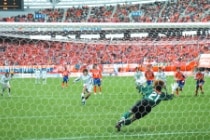
- Ace Okubo transfers overseas
- The decision was made to loan Okubo to Mallorca for a fixed term. Scoring 15 points, Okubo had been the driving force behind the team remaining in J1. A ceremony was held in the final home match.

- Okubo participated in the Athens Olympics as a member of the Japan national team. He scored two goals, but the team failed to advance from the group stage.
- Furuhashi, who had joined the team in the summer, showed a strong ability to score points, with 5 points in the 2nd stage alone, saving the struggling team.
Undefeated in 15 matches, strong showing places team in first place
A tragic scenario lay in wait
In 2005, the league switched to a single-season format. Cerezo had managed to escape from their slump in the previous year, but they suffered three consecutive defeats from the opening, and the atmosphere was uneasy. They were still able to win their match against Nagoya Grampus in the 4th round 1-0 with a winning goal by Morishima. They charged ahead from this point on. They continued their strong showing with no losses in the 15 games from the match against Shimizu in the 19th round to the match against Yokohama FM in the 33rd round, and they stood in 1st place before the final round. The match against FC Tokyo that they faced in the final round was one for the history books, where the team that won would become champion. Cerezo took the lead 2-1 and were one the verge of becoming first-time champions, but they unexpectedly lost a point in additional time. They fell to 5th place with a 2-2 draw, instead of being enveloped in joy, Nagai again became the site of a tragedy.
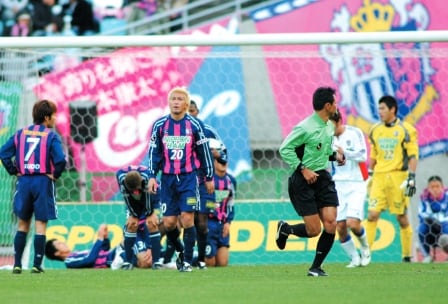
- Season Data (J1 League)
-
[Manager] Shinji Kobayashi
[Results]- J1 League: 5th place (16 wins, 11 draws, 7 losses)
- Yamazaki Nabisco Cup: Best 8
- Emperor’s Cup: Best 4
TOPICS
- Brazilian trio becomes driving force for breakthrough
- Recent additions Bruno Quadros (left), Fabinho (center), and Zé Carlos (right) each displayed their own flavor to the utmost and accelerated the team’s momentum.
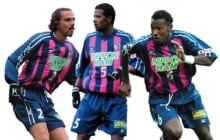
- The tragic conclusion that lay in wait
- The match against FC Tokyo in the final round of the league would determine the champion. Nishizawa scored two points, putting the team in a 2-1 lead, but the team allowed suffered a painful goal right before the end of regulation. The team’s dream of becoming champions for the first time was within reach but slipped through their fingers...

- Yoshida & Furuhashi selected for Best XI
- Yoshida (left) and Furuhashi (right), who assisted the team’s rapid advance, were chosen for the Best XI for the first time. What’s more, rookie Maeda received the J.League Best Young Player Award and manager Kobayashi received a special achievement award.

- Fujimoto and Tanno, the most veteran members of the current team, joined the team this season. Despite being a rookie, Fujimoto was on the pitch in the league’s final round as well, with the first championship win at stake.
- On July 28, the team faced off against Serie A’s Fiorentina in a friendly match. The result was a shutout 0-3 defeat, but the team gained valuable experience.
- The team set a record for 17,648 average spectators, the most in its history. Many supporters came to watch the team compete for the league championship.
Even with young talent who would lead the next generation,
the team slumped and was relegated to J2 for the second time
Cerezo featured a lineup of young, promising players, including up-and-coming rookies such as Shinji Kagawa and Tatsuya Yamashita, as well as Yoichiro Kakitani, who was promoted to the top team. After the team’s steady advance the previous year, it was the object of anticipation and attention, but it failed to gain momentum out of the gate with one win, one draw, and six losses in the first eight games. It dismissed manager Kobayashi in April. Even after Manager Tsukada took the reins mid-season for the second time, the team was unable to win any games until its match against Omiya Ardija in the 17th round. In order to overcome this predicament, the team acquired midfielder Hiroshi Nanami. Nanami was a former member of the Japan National Team. The team had only one win in the first half, and while they started to win matches little by little, it was unable to make up for the extremely slow start. In the final round of the league the team lost to Kawasaki F, sealing its demotion to J2 for the first time in 5 years.

- Season Data (J1 League)
-
[Manager] Shinji Kobayashi → Yuji Tsukada (April onward)
[Results]- J1 League: 17th place (6 wins, 9 draws, 19 losses)
- Yamazaki Nabisco Cup: Best 8
- Emperor’s Cup: Defeated in fourth match
TOPICS
- Cherry blossom diamonds in the rough of the next generation
- Kagawa (left), who went pro before graduating from high school, which was unprecedented for a player not affiliated with an academy, and Kakitani (right), who was the youngest player in the club’s history to sign a pro contract, became members of the cherry blossoms. Kakitani set a record for the youngest person to play in a match for the club in the match against Omiya in the 33rd round.
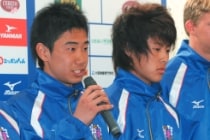
- An ace returns and a superb passer joins
- In June, Okubo (left) returned from Spain’s Mallorca. Furthermore, in August, Nanami (right), who had played as number 10 on the Japan national team, joined the team on fixed term loan from Iwata. He devoted himself to rebuilding the floundering team.

- Second demotion to J2 in the club’s history
- The club floundered continually from the opening, and unable to make a comeback, it went into the final round in 16th place. If the team won, it would have been able to play in the J1/J2 League promotion/demotion series, but it lost 1-3 to Kawasaki F and fell to 17th place. The team’s second demotion to J2 was a done deal.

- In the match against Hiroshima in the 9th round, the team allowed a point 8 seconds after kick-off. The team set the ignominious record of the fastest lost point in the J.League.
- After the end of the season, key players such as Okubo and Nishizawa left the team. The team was pressed to reorganize.
The team’s next period of reform
A year of forging ahead with generational change
In 2007, the team celebrated the 50th anniversary of the inauguration of its predecessor, the Yanmar Diesel Soccer Club. The team brought on Satoshi Tsunami as its new manager and competed for reinstatement to the J1 League with a team consisting mainly of young players, but it failed to pick up momentum, including suffering three consecutive losses from the opening. In May, Culpi took up position as manager for the second time. While moving forward with reforms with bold use of players, such as using Kagawa as a side midfielder and promoting Rui Komatsu to a starting player, the team accumulated wins, but the team’s debts from the first half took their toll, and it failed to reach the cut-off for promotion. Despite this, Kagawa, who scored his first point in the J.League, and Kakitani showed their talents at opportune times, and the club founded the “Hanasaka Club” development support club that same year. This was a year in which the club built up a foundation as a “development-oriented club.”

- Season Data (J2 League)
-
[Manager] Satoshi Tsunami → Levir Culpi (May onward)
[Results]- J2 League: 5th place (24 wins, 8 draws, 16 losses)
- Yamazaki Nabisco Cup: –
- Emperor’s Cup: Defeated in fourth match
TOPICS
- The start of Culpi’s second tenure
- Aiming for reinstatement to the J1 League, the team recruited manager Satoshi Tsunami (left), but the team’s slump continued, including suffering three consecutive losses from the opening, and replaced its manager in May. Manager Culpi (right) who returned for the first time since 1997 was entrusted with leading the team, and he attempted to rebuild it.
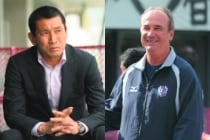
- Awakening of Kobayashi as a major striker
- Kobayashi, who was promoted by manager Culpi to a regular, scored goal after goal. Scoring 12 goals, Kobayashi was second only to Furuhashi, who scored 18 points, and was responsible for the core of the offense.

- Kakitani, youngest in J2 to score a goal & Kagawa’s first point in the J.League
- In the match against Kusatsu in the 12th round, Kakitani (left) scored a goal, setting a new record for the youngest player to score a point in the J2 League and giving a glimpse of his talent. In the match against Mito in the 17th round, Kagawa (right) scored a goal with a left foot kick to score his first point in the J.League. The cherry blossoms’ gems showed off their brilliance.
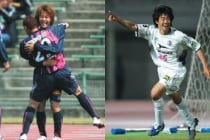
- The “Hanasaka Club” development support club was inaugurated for the purpose of supporting the development organizations (U-18, U-15, U-12, and Ladies).
- Kagawa and Morishima played in the U-20 World Cup. Japan advanced from the group stage in first place and moved on to the Round of 16.
“Mister Cerezo” retires
Number 8 entrusted to next generation ace
While the team continued its erratic playing with alternating wins and losses early in the season, it earned seven consecutive victories starting in its match against Ehime FC in the 10th round, gaining momentum. For a time, the team maintained 2nd place position, within the cut-off for promotion, and hopes for its reinstatement to the J1 League rose. However, the team suffered its second set of three consecutive losses in the mid-season. The team ultimately finished in 4th place and missed its chance at promotion. That year was also a season that marked an end of an era. Having played for Cerezo continuously for over 18 years, “Mister Cerezo,” Morishima, announced his retirement. In his final match, a game against Ehime in the final round, he was subbed in for Kagawa to play right before the end of regulation. After the match, he was sent off by his teammates and supporters by being tossed in the air, and he entrusted the ace jersey number 8, which was his symbol, to Kagawa.

- Season Data (J2 League)
-
[Manager] Levir Culpi
[Results]- J2 League: 4th place (21 wins, 6 draws, 15 losses)
- Yamazaki Nabisco Cup: –
- Emperor’s Cup: Defeated in fourth match
TOPICS
- Addition of Inui invigorates offense
- Inui joined the team in June on a fixed term loan from Yokohama FM. After scoring his first point in the second match after his debut, Inui breathed life into the offense in coordinated plays with Kagawa and other players.

- Next generation teen ace makes national team debut
- Kagawa was the first player born in the Heisei era (1989 to 2019) to be selected as a member of the Japan national team. After making his debut as a member of the Japan national team in the match against Côte d'Ivoire in May, he scored his first point as a member of the national team in the match against the UAE in October.

- “Mister Cerezo” leaves the pitch
- The final round of the J2 League was Morishima’s last match. Shortly before the end of regulation, Morishima subbed in for Kagawa to stand on the field and display his gallant figure one last time. After the match, Morishima, who had spent 18 years devoted solely to the cherry blossoms, entrusted number 8, the mark of an ace, to Kagawa.

- Kagawa was selected as a member of the Japan national team for the Beijing Olympics and played in all three group stage matches. However, they lost all three matches, becoming painfully aware of the barrier between them and the rest of the world.
- Komatsu scored 16 points. He tied Kagawa for the most points scored for the team and established his position as a striker.
On a winning streak
Reinstatement to J1 after 4 years
Inui, who had joined the team on a fixed term loan part way through the previous year, fully transferred, and Nishizawa returned for the first time in three years. Furthermore, in 2009, the team established a rock-solid team lineup by reinforcing itself with Kim Jin-hyeon in its “Asia section” and Martinez from Brazil. The team subsequently displayed consistent strength with its high scoring ability centered around No. 8, Kagawa, who made history as the J2 League’s top scorer. The team was undefeated in 12 games starting from the 36th round. Maintaining its place in the upper ranks and with a win against Thespakusatsu Gunma in the 48th round, the team secured a spot in the top two, within the cut-off for promotion. The team achieved reinstatement to J1 after 4 years. Meanwhile, Nishizawa retired at the end of the year. Following after Morishima, a key cherry blossom’s player bid farewell to his uniform.

- Season Data (J2 League)
-
[Manager] Levir Culpi
[Results]- J2 League: 2nd place (31 wins, 11 draws, 9 losses)
- Yamazaki Nabisco Cup: –
- Emperor’s Cup: Defeated in second match
TOPICS
- J2 top scorer Kagawa and 100 points in the season
- Kagawa (left) who had inherited number 8 met expectations and became the J2 League’s top scorer with an impressive 27 points scored. Furthermore, the attacks involving Martinez (right), who wore number 10, and Inui, who scored 20 points, were unrivaled in their destructive power, and the team scored 100 points in the year.
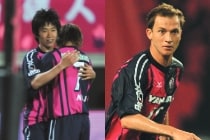
- Longed for reinstatement to J1
- The team won a sweeping 5-0 victory in its match against Kusatsu in the 48th round, and clinched reinstatement to the J1 League with 3 matches remaining. Maintaining a position within the cut-off for promotion with overwhelming offensive power right from the start, the team showed off a steady strength.

- Nishizawa concludes his career
- Nishizawa had returned to the team that year. He was unable to play the way he wanted due to his injury, but he supported the young team with his immense presence. In November, he announced his retirement, and his sidekick Morishima also came to the ceremony at his final home game.

- Yamaguchi and Maruhashi from Hanasaka Club’s inaugural year were promoted to the top team. The club took a major step forward as a “development-oriented club.”
- Kim Jin-hyeon, who joined the team in its “Asia section” watched over it as its guardian angel. He greatly contributed to the reinstatement to the J1 League.
- Morishima, who had retired the previous year, took up position as ambassador. He received the J.League Career Achievement Award following the end of the season.
Stellar performances by the three shadow strikers
A first achievement in the first year after reinstatement to J1
In 2010, the team acquired Hiroshi Kiyotake and Akihiro Ienaga for its offensive lineup as well as Teruyuki Moniwa and Taikai Uemoto for its defensive lineup, creating a force worthy of the J1 League. After the first half, Kagawa departed for Germany, but the three shadow strikers (Inui, Ienaga, and Kiyotake) had a great showing making up for the “absence of no. 8.” Moniwa and Uemoto, with their proven results on defense, performed as expected, pushing the team into the upper ranks. In the final league round, the team achieved a solid 6-2 victory over Iwata and rose to 3rd place, the team’s highest position ever in its first year after reinstatement to the J1 League. It also secured the team a right to play in the AFC Champions League for the first time ever. The multitude of fans who packed Kincho Stadium, which had finished renovations the same year, shared in the joy of this outstanding achievement.

- Season Data (J1 League)
-
[Manager] Levir Culpi
[Results]- J1 League: 3rd place (17 wins, 10 draws, 7 losses)
- Yamazaki Nabisco Cup: Defeated in group stage
- Emperor’s Cup: Defeated in fourth match
TOPICS
- Kagawa departs for Germany & dynamic new players
- Kagawa (top) transferred to Germany after the first half. There were concerns about the effect of his absence, but the new additions of Kiyotake (left) and Ienaga (right) formed the three shadow strikers in the second line along with Inui. Together with Adriano, who scored 14 points, they successfully made up for Kagawa’s absence.

- Completion of another home stadium
- Renovation work on Kincho Stadium was completed. The appeal of the stadium was its sense of presence that could only be found in a stadium exclusively for ball games. The inaugural match was held against Kawasaki F in the 17th round.

- Securing the right to play in their first ACL
- Including 4 points scored by Adriano, the team achieved a solid 6-2 victory against Iwata in the League’s final round. The team rose to 3rd place, inside the cut-off for playing in the ACL, and won its first-ever ticket to the Asian stage.

- Ogihara, Nagai, and Sugimoto were promoted to the top team. Despite being a rookie, Nagai played in seven league games.
- Nishizawa, who had retired the previous year, took up position as ambassador.
- Moniwa, Ienaga, and Inui won the Valuable Player Award. Their work as key players in the rise to the top ranks was lauded.
Defeating a longtime enemy on the Asian stage
Team advances to Best 8 in its first ACL
Ienaga and Adriano, who had contributed to the advances of the previous year, left the team, and with the impact of the Great East Japan Earthquake, including schedule changes, the team was unable to add to their points since the opening and floundered. In a further blow, Inui transferred to Germany in August, and the team faced difficult financial circumstances. Despite this, the team, participating in their first ACL, broke through the group stage in 2nd place and won 1-0 in the Osaka Derby which took place in round 16 as an away game. After defeating its longtime rival and making it into the Asian Round of 8, the team also produced results in the cup matches, advancing to the Round of 8 in the Yamazaki Nabisco Cup and the quarterfinals in the Emperor’s Cup. However, the team sank to 12th place in league matches and Culpi’s retirement was decided. The beloved manager bid farewell to the cherry blossoms.

- Season Data (J1 League)
-
[Manager] Levir Culpi
[Results]- J1 League: 12th place (11 wins, 10 draws, 13 losses)
- Yamazaki Nabisco Cup: Best 8
- Emperor’s Cup: Best 4
- AFC Champions League: Best 8
TOPICS
- Crushing of archnemesis G Osaka in the ACL
- The Osaka Derby took place in round 16. This important game in enemy territory was a tense one, with neither side giving up an inch, but 88 minutes in, Takahashi scored a magnificent winning goal. The team defeated its rivals in the Asian arena and exploded with joy.
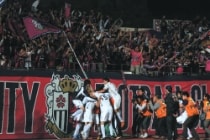
- Inui departs for Germany
- In his last Cerezo match in the game against Kashima in the 19th round, Inui scored his own parting goal. After the match, his teammates, staff, and supporters gave him a warm sendoff.
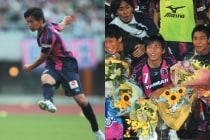
- Beloved manager retires
- The team’s manager, who had guided it to its reinstatement to the J1 League and its first-ever ACL appearance, retired at the end of the year. Culpi himself also shed tears in the ceremony at the final match and was reluctant to part.

- In the Tohoku Earthquake and Tsunami Relief Charity Match, Inui played as member of the Japan national team, and Moniwa played as a member of the J.League TEAM AS ONE. Cerezo also held a charity match against Kyoto.
- The team floundered among the bottom ranks, but Kiyotake, who showed a strong performance and scored 7 points in 25 matches played, was selected for the Best XI for the first time.
Team escapes from its slump with new lineup
Creation of a virtuous circle by promoting young players
Kakitani and Yamashita returned to the team and pledged to make a comeback from the previous year, when the team finished at the bottom. Unfortunately, the tactics of the new manager, Sérgio Soares, were not absorbed by the team as hoped, and it languished at the bottom. In the summer, Kiyotake and Kim Bo-kyung transferred overseas, but at the same time, the team acquired midfielder Simplício, a former Brazil national team member. Additionally, Culpi took up position as manager for the third time in August. The team attempted to escape from its slump by making major changes to its lineup. However, the gears that fell out of sync had a hard time realigning, with the team fighting to remain in the J1 League once again in the second half. Despite this, with the arrival of young talent such as Kakitani, who scored 11 points, and Minamino, who made his debut in the top team despite having a type two registration, the team managed to remain in the J1 League by its own efforts in the match against Kawasaki F in the final round.

- Season Data (J1 League)
-
[Manager] Sérgio Soares → Levir Culpi (August onward)
[Results]- J1 League: 14th place (11 wins, 9 draws, 14 losses)
- Yamazaki Nabisco Cup: Best 8
- Emperor’s Cup: Best 8
TOPICS
- Returning cherry blossom treasures shine
- Kakitani, who returned after 2 years of being on a fixed term loan to Tokushima, shone on the pitch and scored 11 goals. Leading a team that had been struggling to remain in the J1 League, he won the Valuable Player Award.

- Replacing key players
- The team’s lineup was greatly changed in the summer. While Kiyotake (left) and Kim Bo-kyung transferred overseas, the team acquired Simplício, a former Brazil national team member (right). The team aimed to escape from its slump with its new lineup.

- Culpi’s third stint & a new star appears
- In August, Culpi (left) took up position as manager for the third time. As the team was proactively using young players, Minamino (right), who had a type two registration, made his J.League Debut in the match against Omiya in the 32nd round.

- Yamaguchi, Ogihara, Sugimoto who was on a fixed term loan to Tokyo V, Kim Bo-kyung, and Kiyotake who transferred overseas, played in the London Olympics. In the third-place match, a game between Japan and South Korea took place.
- Kincho Stadium won the J-League Best Pitch Award
A year where “development” bears fruit
Team clinches ticket to ACL for the first time in three years
Starting with Minamino who made his debut the previous year, the team promoted four players from U-18. The team consisting of both young players and veterans, won their opening J1 League match for the first time in 14 years, and made an outstanding start with 3 consecutive wins. Even from the middle of the season onward, the team was in the hunt for the top ranks, recording 10 undefeated matches. Entering the final round in 6th place, the team defeated Urawa 5-2 in away game to rise to 4th place, clinching a ticket to the ACL for the first time in 3 years. During this fruitful year, Kakitani shone particularly brightly. Having inherited number 8 starting that year, he scored 21 points in 34 games played. In addition to Kakitani, Yamaguchi and Ogihara became the first players hailing from the academy to become members of Japan’s national team, making this a year where the “development Cerezo” blossomed.

- Season Data (J1 League)
-
[Manager] Levir Culpi
[Results]- J1 League: 4th place (16 wins, 11 draws, 7 losses)
- Yamazaki Nabisco Cup: Best 8
- Emperor’s Cup: Defeated in fourth match
TOPICS
- The answer to the team’s prayers, wearing number 8, awakens
- Wearing the ace number, Kakitani went on a rampage, scoring a career-high 21 points. He won numerous awards, including Best XI, Most Valuable Goal Award, and the Individual Fair Play Award.
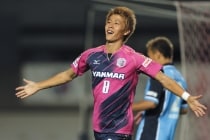
- Friendly match against the Red Devils lead by Kagawa
- A friendly match against Manchester United, one of the top European teams, was held in Nagai. Former club player Kagawa played in the match, and the young Sugimoto and Minamino scored goals, making their presence felt.
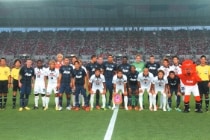
- Talent from the cherry blossoms make leaps and bounds
- In July, Kakitani, Yamaguchi, and Ogihara became the first players from the Academy to be selected as members of the Japan national team. In the J.League Awards in December, Kakitani and Yamaguchi won the Best XI, Minamino (bottom photo) won the Best Young Player Award, and the team won the Best Youth Scheme Award.

- The top teams’ base was relocated from Minamitsumori to Maishima. The renovated Maishima facility was turned into a fully-equipped facility that was top-class for the league, including both practice grounds and a clubhouse.
- Kakitani, Yamaguchi, and Ogihara, played in the East Asian Cup, contributing to a championship win. Kakitani shone as the top scorer and Yamaguchi shone as the competition MVP.
- The club celebrated the 20th anniversary of its establishment in December.
Despite aiming for its first ever championship with a new world-class FW,
the team ends up with a surprising demotion to J2
The team acquired Forlán, a superstar in the big European clubs, and won MVP in the South Africa 2010 World Cup. The team hired Ranko Popovic as its new manager and established a lineup that aimed for its first championship win but played erratically from the opening matches. While the team showed its strength in the ACL and advanced to the Round of 16, it was unable to escape its slump in the league matches. In June, Marco Pezzaiuoli took over as manager. Cacau, a forward and former Germany national team member, joined the team in August as a replacement for Kakitani, who transferred overseas in July. The situation did not improve, however, despite an attempt to make a recovery by changing the lineup. Starting in September, Yuji Okuma, who was the person responsible for the Academy Division, was entrusted with management of the team, but he was unable to turn the tide, and the team’s regrettable demotion to J2 was decided.

- Season Data (J1 League)
-
[Manager] Ranko Popovic → Marco Pezzaiuoli (June onward)
→ Yuji Okuma (September onward)
[Results]- J1 League: 17th place (7 wins, 10 draws, 17 losses)
- Yamazaki Nabisco Cup: Best 8
- Emperor’s Cup: Best 8
- AFC Champions League: Best 16
TOPICS
- World Cup MVP Player becomes a cherry blossom
- World-class striker and top scorer as well as MVP of the South Africa 2010 World Cup, Forlán, joined the team. He showed off his high level of decisiveness, including scoring two points in the Osaka Derby.

- Three players play in the Brazil World Cup
- The World Cup was held in the “Football Kingdom.” From Cerezo, Kakitani (left) and Yamaguchi (right) were selected for the Japan national team, and Forlán was called up for the Uruguay national team. They were dynamic in their plays on the highest-level stage of football.

- Kakitani decides to challenge himself overseas
- In July, Kakitani’s transfer to Basel was decided. The game against Kawasaki F in the 12 round was his last match, and in the ceremony after the game, legends Morishima and Okubo presented him with flowers. Through his tears, he swore to be successful in Basel.

- In its second ACL appearance, the team advanced to the Best 16. The team lost to Guangzhou F.C. in round 16, but it steadily increased its experience in the Asian arena.
- In August, the team acquired Cacau, a former Germany national team member. Despite joining midway through the season, he showed off his ability by scoring 5 points.
- A record-setting 21,627 average number of spectators.
Despite adding veterans to turn over a new leaf,
misses it chance to return to the J1 League
The team recruited Paulo Autuori, who led Brazil’s prestigious San Paulo FC to victory in the Club World Cup. Preparing itself through reinforcements from experienced veterans such as former Japan national team members Keiji Tamada and Kunimitsu Sekiguchi, the team marked a favorable start, remaining undefeated in the six games after the opening. However, the team was subsequently unable to increase its wins and fell outside of the range for automatic promotion to the J1 League. Forlán and Cacau left the team at the end of their contracts in the summer. Furthermore, the team was in chaos, including the announcement of a change of manager before the final round, and it was 4th in league matches. In the final against Avispa Fukuoka in the playoffs for promotion to the J1 League, the team had a 1-0 lead but suffered a painful lost point near the end of regulation and there was nothing more it could do. The team’s path to the J1 League was hit a roadblock at the very end.
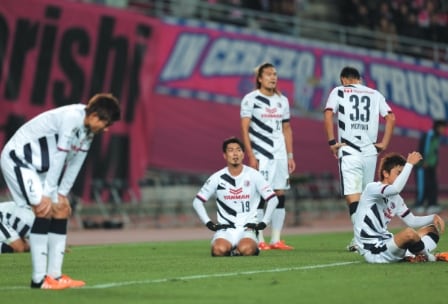
- Season Data (J2 League)
-
[Manager] Paulo Autuori → Kiyoshi Okuma (November onward)
[Results]- J2 League: 4th place (18 wins, 13 draws, 11 losses)
- J1 Promotion Playoffs: Semifinalist
- Yamazaki Nabisco Cup: –
- Emperor’s Cup: Lost in 1st round
TOPICS
- Experienced, proven veterans join the team
- The team acquired match-ready veterans such as Takarada (left) and Sekiguchi (right) who had experience as Japan national team members. Takarada scored a team record-tying 10 points and Sekiguchi also contributed with his plentiful endurance and passionate plays.

- Big names leave the team
- Forlán (left) and Cacau (right) left the team at the end of their contracts in the summer. Forlán showed an overwhelming ability to score points, scoring 10 points in just the first half.

- Losing in the playoffs, the team misses chance at J1 League reinstatement
- The team ended the season in 4th place and played in the J1 promotion playoffs. Under manager Kiyoshi Okuma (right), who took over the reins in the final league match, the team fought as one against Fukuoka in the finals, but gave up a goal right before the end of play. The team lost its chance at reinstatement to J1 by a hair’s breadth.
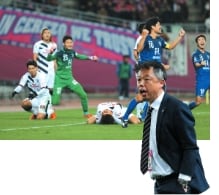
- In January, Sugimoto’s transfer to Kawasaki F and Minamino’s transfer to Red Bull Salzburg were announced.
- Manager Paulo Autuori retired before the final round of league matches. Kiyoshi Okuma, who was the person responsible for the Enhancement Division hastily took up position as manager.
- The transfer of Yamaguchi, who had been serving as captain, to Hanover in Germany was decided after the end of the season.
“Return squad” of career players lead the team
Winning the playoffs, the team returns to the J1 League after three years
The team showed strong resolve for reinstatement to the J1 League with major reinforcements to the team through the return of Kakitani and Sugimoto as well as acquiring match-ready veterans such as Souza and Riku Matsuda. The team made a play for 1st place right out of the gate, remaining undefeated in the first eight games from the opening. However, captain Kakitani was injured in the match against V-Varen Nagasaki in the 17th round. Dark clouds gathered over the team, but Sugimoto erased any doubts by making a strenuous effort and scoring 14 points. Furthermore, Yamaguchi returned from Germany in the summer, further strengthening the lineup. The team advanced into the promotion playoffs for its second consecutive year. The team clinched a win in the semifinals with a goal by Kakitani, who returned from injury in the match against Kyoto Sanga F.C. In the finals against Fagiano Okayama, the newly joined Shohei Kiyohara scored a priceless winning goal. Although they struggled to get there, the team secured a ticket to the J1 League.
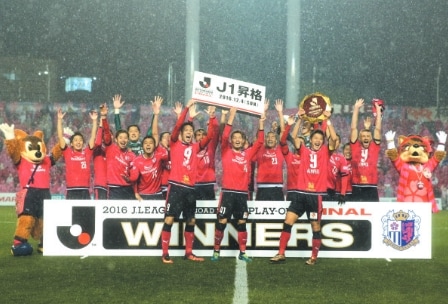
- Season Data (J2 League)
-
[Manager] Kiyoshi Okuma
[Results]- J2 League: 4th place (23 wins, 9 draws, 10 losses)
- J1 Promotion Playoffs: Champions
- Yamazaki Nabisco Cup: –
- Emperor’s Cup: Defeated in third match
TOPICS
- Returned career forwards lead the team
- Kakitani (left) and Sugimoto (right) returned to lead the team to reinstatement to the J1 League. Kakitani pulled the team forward as captain despite suffering an injury, while Sugimoto scored 14 points to become the team’s top scorer, making his presence felt as a new source of scored points.

- The former captain returns from Germany
- In June, Yamaguchi returned from Hanover, and together with the newly joined Souza, he fought ferociously in the midfield area. On the other hand, Ogihara, whose opportunities to play had decreased, transferred to Nagoya.

- A J1 League reinstatement everyone helped to achieve
- As with the previous year, the team entered the playoffs in 4th place for league matches. In a rainy finals match, the entire team helped defend the one point scored by new addition MF Kiyohara (right), and achieved its long-sought return to the J1 League. The team finally earned the right to return to “the place where it belongs.”

- The club launched a U-23 team and participated in the J3 league. It began making efforts to become a place for training young talent and selecting players who would be able to be active in the top team.
- The Brazilian trio of Souza, Bruno Meneghel, and Ricardo Santos joined the team. However, Bruno, who had been upping his game, was lured away by Changchun Yatai in July.
- After the end of the season, manager Okuma, who had led the team to its reinstatement to the J1 League after three years, stepped down.
Making quantum leaps in both league and cup matches
Achieves “two championships,” including a new title
Kiyotake returned from Sevilla and Yoon Jong-hwan took up the position as the Club’s first former player to become manager. The team remained at a standstill immediately after the opening, but the strong defense, hard work, and football that focused on competition promoted by the new manager proved powerful. The team demonstrated unrivaled strength, with 9 undefeated games starting with the match against Hiroshima in the 11th round. As a result of losing momentum in the summer, the team’s ultimately ended in third place, but it won the right to play in the ACL in its first year back in the J1 League. Furthermore, the team continued to make rapid progress in cup matches, advancing to the finals in both the Levain Cup and the Emperor’s Cup. Although they struggled in both finals, they won both, almost as if shaking off past weakness. A team that had failed to win any championships since participating in the J.League, won two championships at once.

- Season Data (J1 League)
-
[Manager] Yoon Jong-hwan
[Results]- J1 League: 3rd place (19 wins, 6 draws, 9 losses)
- YBC Levain Cup: Champions
- Emperor’s Cup: Champions
TOPICS
- The first retiree manager is born / a rapid return
- Yoon Jong-hwan (left), who had previously shone as a player, became the first retiree manager. He planted the concepts of hard work and tenacious pursuit of victory in the minds of the players. Kiyotake (right) suddenly returned from Seville in February. He entranced supporters with the best technique in the J.League.

- Clinching its third ACL appearance
- Sugimoto exploded with 22 points, his personal best. The team displayed the strength to make it to victory with even stronger defense and hard work, and it moved up to 3rd place in its first year after reinstatement to the J1 League. The team clinched an appearance in the following year’s ACL.
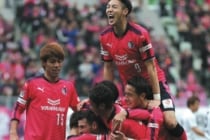
- Achieving “two championships” in the cup matches.
- The members for the cup matches, who were also known as the “Levain Squad,” scored a series of consecutive wins in the Levain Cup and Emperor’s Cup. The key players who had been passed the baton in the finals also displayed competitive strength, and the team scored championship wins in both competitions. With the team all of sudden winning two titles that had been out of reach, the sense of elation rose to a fever pitch.
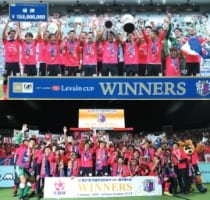
- It was determined that the team would remain in the league when it won its match against FC Tokyo in the 25th round. This was the first time a team that had been promoted in the J1 promotion playoffs managed to remain in the J1 League.
- The club received a slew of awards in the J.League Awards, which were attended by the manager and all players. Individually, Yoon Jong-hwan received the Best Manager Award, Yamaguchi and Sugimoto received the Best XI Award, Kakitani received the Individual Fair Play Award, and as teams, the club received Fair Play Awards for both J1 League and J3 League.
Bold moves in using players fail to bear fruit
Distinguished manager Yoon Jong-hwan steps down
The team won the Fuji Xerox Super Cup, in which it faced Kawasaki F, the king of the league. The team seemed to make a good start, but in part due to a tight schedule that included participation in the ACL and the World Cups, the team gradually became exhausted. The manager introduced a bold system of rotating starting lineups to alleviate the burden on players, but was unable to produce results, with the team suffering its first-ever defeat in the ACL group stage. The team was unable to win in league matches from the summer on and it was enveloped in a feeling of stagnation. The team’s sense of unity began to diminish, and they fell further down the ranks. As a result, the club announced manager Yoon Jong-hwan’s retirement with two league matches remaining. The distinguished manager who had led the team to its first title left the team.
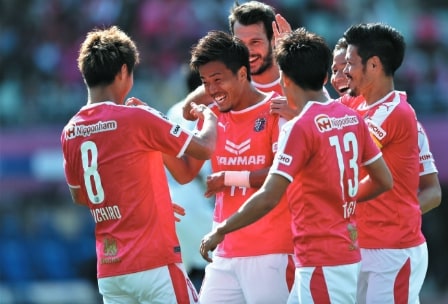
- Season Data (J1 League)
-
[Manager] Yoon Jong-hwan
[Results]- J1 League: 7th place (13 wins, 11 draws, 10 losses)
- YBC Levain Cup: Best 8
- Emperor’s Cup: Defeated in fourth match
- AFC Championship League: Defeated in group stage
TOPICS
- First appearance in the Xerox Cup & first title
- The team made its first appearance in the Xerox Cup as the victors of the Emperor’s Cup and defeated the league champions, Kawasaki F, 3-2. The team had won a title in a major match signaling the opening of the season.

- The team was listless on the Asian stage...
- In the team’s third ACL, the team was unable to come up with a win despite using a rotating lineup. Ending in 3rd place in the group, the team suffered its first defeat in the group stage.
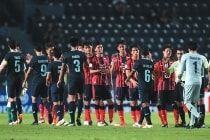
- The manager who led the team to two titles retires
- In the league matches, where the team aimed to secure an appearance in the ACL for the second consecutive year, the team started to lose steam in the summer and it announced the retirement of Yoon Jong-hwan (left) midway through the season. Despite this, the team produced a satisfying come-from-behind victory against Yokohama FM in the final match of the season, sending a farewell win to the departing, distinguished manager.

- In May, the company changed its name to CEREZO OSAKA CO., LTD.
- Yamaguchi and Kim Jin-hyeon were selected as national team members in the Russia World Cup. Yamaguchi played in three matches.
- The team made its first appearance in the Suruga Bank Cup but suffered a narrow 0-1 defeat against Independiente. The team was unable to win the title.
- The club won its first Fair Play Prize (Prince Takamado Cup), which is presented to the team that shows the fairest play throughout the year.
- After the end of the season, Yamaguchi transferred to Kobe and Sugimoto transferred to Urawa. Two career players left the team.
- The club celebrated the 25th anniversary of its founding in December.
- On December 21, it was announced that Morishima, who had previously lead Cerezo as its ace, would take up the position of president.
The team starts a new chapter under the lead of a Spanish manager
Building a strong defense, they make it into 5th place
The team started a new chapter by recruiting Lotina, who led Tokyo V, as their manager. “Positional football,” which called for a high level of tactical understanding on the part of the players, took time to penetrate into the team’s tactics, leading to an accumulation of losses in the early games. However, the switch to a 4-4-2 formation in May paid off and the team made rapid advances. The gaps left by the departure of players such as Sugimoto, Yamaguchi, and Yamamura were filled by players such as Tokura, B. Méndez, Okuno, and Fujita, and the team started to pile on the wins. The team fell just short of the finals, but it finished the season in a respectable 5th place. The team’s 25 lost points were the fewest in the league, and it also set a new record for the fewest in the club’s history. Fujimoto, who had devoted himself entirely to Cerezo for 15 years, retired. He took up a position as an ambassador starting the following year.

- Season Data (J1 League)
-
[Manager] Lotina
[Results]- J1 League: 5th place (18 wins, 5 draws, 11 losses)
- YBC Levain Cup: Defeated in playoff stage
- Emperor’s Cup: Defeated in fourth match
TOPICS
- “Lotina Cerezo” begins
- The skilled Spanish manager Lotina took over the reins as the new manager. The team’s “positional football,” which emphasized the position of each individual player, was increasingly fine-tuned with each passing day.

- Building a strong defense and recoding the lowest number of lost points in team history
- The team’s precise and solid football with a thorough focus on positioning allowed its defensive organization to work excellently. Boasting an ironclad defense, with 25 lost points in 34 matches, the team set a new record for the fewest lost points for a club in the J1 League. Goalkeeper Kim Jin-hyeon (photo), who contributed to that solid defense, and defender Matej Jonjic won the Valuable Player Award.

- Distinguished cherry blossom players leave the pitch
- Fujimoto retired after the 2019 season. He had joined the team in 2005 as a rookie straight out of high school and had played for Cerezo for 15 years. A retirement ceremony was held after his final home match, where he bid farewell to the pitch and his teammates.

- “Mister Cerezo” Morishima becomes president. This was only the second time in the whole of the J.League that a club’s former player had become its president.
- Okuno, who’s main role is midfielder, was converted to a forward and went on a goal-scoring spree. He scored a team record-tying 7 points.
- In the 27th round, the team cruised to an easy 3-1 win against G Osaka in the Osaka Derby with goals scored by B. Méndez and other players. Nagai was brimming with excitement with the first Derby victory in seven years.
A strenuous effort while at the mercy of the COVID pandemic
The team clinches a spot in the ACL playoffs
The team started its second year under Lotina with the aim of a championship win, but the J.League was suspended for approximately four months due to the COVID pandemic. It resumed in July, but had an unprecedented, tight schedule, and matches were held without spectators. The team was forced to wage difficult battles amidst these extraordinary circumstances. Despite this, the team made their way up to the upper ranks using highly developed “positional football” as its weapon. The new addition, Sakamoto, created opportunity after opportunity on the right side and breathed life into the offense. The team ultimately finished in fourth place as a result of losing momentum somewhat starting in October. The team clinched a spot in the ACL playoffs, but the club made the decision to end its contract with manager Lotina.
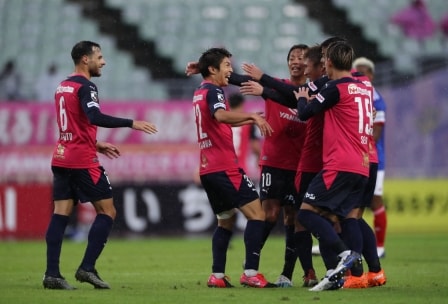
- Season Data (J1 League)
-
[Manager] Lotina
[Results]- J1 League: 4th place (18 wins, 6 draws, 10 losses)
- YBC Levain Cup: Best 8
- Emperor’s Cup: –
TOPICS
- Seko wins the New Hero Award
- Seko, who was in his third year as a professional player, won the New Hero Award in the Levain Cup, a first-ever feat for the club. He also won the Best Young Player Award in the J.League, managing to win two awards at once.

- Manager Lotina steps down
- Manager Lotina, who had instilled the team with precise tactics, stepped down at the end of his contract. He bid the team farewell by leading it to 4th place in the league and giving the team a spot in the ACL playoffs as a parting gift.
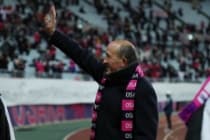
- U-23 ends its activities after five years
- Inaugurated in 2016, the Cerezo Osaka U-23 team that had participated in the J3 League ended its activities. It had fulfilled its role of “training players who can succeed at the top,” with many young players, including high school students, gaining experience in actual games.

- Kajino, who was a former player for the club, returned after seven years. He would support the club as the Team Management Division Manager.
- The team won 2-1 in the away match in the Osaka Derby that was the first game after the league resumed play. It was the first time in 17 years that the team had defeated G Osaka in its rival’s territory.
- Kiyotake, the pillar and captain of the team, maintained good performance throughout the season. He scored a career-high eight points and eight assists.
Despite replacing the manager mid-season,
the new manager, Kogiku, succeeds in rebuilding the team
Continuing from the previous year, the J1 League held its matches amidst the COVID pandemic. The club let Levir Culpi take the helm and changed direction toward “captivating offensive football.” Okubo, who returned to the team after 15 years, showed a strong start, including a goal in the opening game. However, the team lacked balance between offense and defense, gradually losing momentum and wins fell out of reach. In late August, the team suffered a major loss to Shonan and manager Culpi retired. Kogiku, who had been serving as coach, took over the reins as manager. At the same time, Inui returned after 10 years. Although the team’s first go at the ACL in 3 years ended with a loss in round 16, it advanced to the finals in the Levain Cup. The team fell just short and suffered a narrow loss to Nagoya, but manager Kogiku succeeded in rebuilding the team, with the season ending in a way that gave hope for the next season.

- Season Data (J1 League)
-
[Manager] Levir Culpi → Akio Kogiku (August onward)
[Results]- J1 League: 12th place (13 wins, 9 draws, 16 losses)
- YBC Levain Cup: Semifinalists
- Emperor’s Cup: Best 4
TOPICS
- Completion of Yodoko Sakura Stadium
- Upon completion of major renovations at Yodoko Sakura Stadium, it began operating in July. The team obtained a home stadium where the pitch and stands were close and gave off an even stronger home stadium feel.

- The team loses in round 16 of its first ACL in 3 years
- The team played in its first ACL in three years. The team made it through the group stage undefeated. The group stage matches were concentrated in Thailand. The team moved on to round 16, where they lost 0-1 to South Korea’s Pohang and left the tournament.
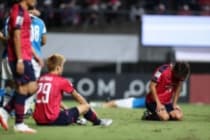
- The returned Okubo announces retirement.
- Having made a sudden return after 15 years, Okubo had accumulated goals right from the opening and proved that he was as vigorous as ever. However, he announced his retirement in November. The holder of the record for the most points scored in the J1 League regrettably took of his cleats.

- Kazama, who had held positions as manager of Kawasaki F and Nagoya, took up the position of chairman of the Academy Technical Committee.
- Seko participated in the Tokyo Olympics, which were held after a one year delay. Female players hailing from Cerezo—Takarada, Hayashi, and Kitamura—played on the Olympic stage as well.
So close, but unable to reach their objective
The team ended as semifinalists in the Levain Cup as well
The second year under manager Kogiku. “Bonds,” “hard work,” and “aggressiveness.” The manager went into action citing these three keywords and made coming in third place or higher in the league and capturing a title the team’s objectives. The team started by alternating between wins and losses, lacking stability, but starting in May, its offense and defense began to mesh and started making advances. While racking up wins, including six consecutive victories in official matches, players including Yamanaka, Maikuma, Suzuki, and Jean Patric played an active role, giving the team depth. The team advanced to the finals in the Levain Cup, but fell to Hiroshima in a come-from-behind loss. Enduring frustration two consecutive years In the J1 League, the team lost momentum starting in September. The possibility of coming in third place or higher remained a possibility until the final round, but the team ultimately finished in fifth place.

- Season Data (J1 League)
-
[Manager] Akio Kogiku
[Results]- J1 League: 5th place (13 wins, 12 draws, 9 losses)
- YBC Levain Cup: Semifinalists
- Emperor’s Cup: Best 8
TOPICS
- The team left the Levain Cup finals in tears for two consecutive years.
- Although the team had advanced up through the Levain Cup with “taking back what we left behind last year (Manager Kogiku)” as its slogan, it suffered a 1-2 defeat against Hiroshima in a come-from-behind loss.

- Kitano sets new record for youngest player
- The 17-year-old Kitamura, who had signed a pro contract, scored his first goal in the match against Kashima in the Levain Cup in March. His goal at 17 years, 6 months, and 17 days of age set a record as the club’s youngest scorer in a cup game.

- Decision to have Ladies participate in WE League
- A decision was made in September for Sakai Ladies to participate in the WE League starting with the ’23-’24 season. Sakai Ladies was inaugurated in 2010 as an U-15 ladies team, and was slightly over 12 years old. This would be a major step forward as pros.

- Sakemoto, who played for the team for 16 years until the 2016 season, retired from Kagoshima and took up position of fourth generation ambassador.
- Kim Jin-hyeon, who played in the match against Tosu in the 11th round, played his 334th game in the J1 League, setting a new record for most games played by a foreign national player in the J1 League.
- The U-18 and U-15 teams both dominated the Japan Club Youth Football Championships. Furthermore, Sakai Girls also won the Japan Club Youth Women’s Football Championship, and the club pulled off the huge achievement of winning the three academy titles.


